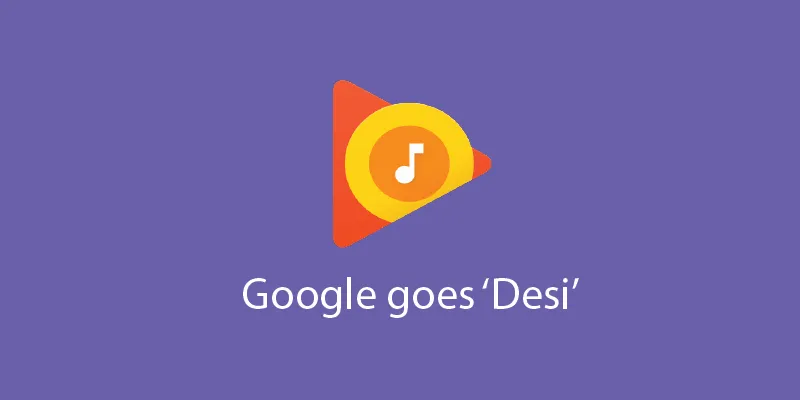Google's next attempt is to take over the Indian music space
Google is on the road to becoming the digital media honcho of the current times, making the old-school players in the Market like Apple and Facebook squirm in their seats. Days after announcing two iconic apps of 2016- ‘Google Allo’ and ‘Google Trips’, that professionals state may just run its contemporaries out of the market- they have now confirmed the launch of its Play Music store in India.

Although this feature has been available in the international markets since 2011, the multi-billion conglomerate did not extend this service to the Indian market considering the fact that only a small fraction (constituting less than 10 percent) of the digital Indian users are willing to spend money on purchasing music online.
The features offered in this service are similar to the ones offered by Apple’s iTunes and Australia’s Guvera, keeping in terms with the international market – where the app suggests popular individual tracks and albums, and allows you to purchase them for unlimited future listening. In more detail, it lists songs under categories like ‘Top Songs’, ‘Top Albums and New Releases’- keeping you up to date with the hit numbers marking their spot on the Billboards. Songs are further sub-categorised under tag-lines such as ‘Best of Bollywood’, ‘Indian Pop Hits’, ‘International Music Indian Capital’ and more. It makes browsing even easier, by offering the option of searching for individual songs and albums under the various regional languages.
According to Mashable, the content is officially priced from a rough Rs. 15 for individual songs and Rs. 90 for an individual album, similar to the numbers offered by Apple’s iTunes. But what sets it apart is the higher range and variety of regional music that it offers in comparison to the iTunes, which although has a power-box of the greatest international hits, does not do much to reach out to the regional target base.
However, at the same time- domestic players like Times Internet owned ‘Gaana’ and Tiger Global led ‘Saavn’ may not have too much to fear considering that they usually offer monthly packages between Rs. 100 and 150, which work out more cost efficient than its Google counterpart.
Google’s CEO Sundar Pichai has seemed to be targeting the Indian Market to quite the number this year, seeing great ‘digital potential’ across the multi-lingual canvas. A major reason for his single-lined focus in the country may be due to the fact that the Indian Market is more accessible to the multi-billion dollar company as compared to its Chinese counterparts, where Google has seemingly been tapped out of the market. According to TechCrunch, just about 300 million of an estimated 1.3 billion people are using the Internet- paving the way for great industrial and technological growth in the Indian Market.
"In an increasingly mobile-first world, India gives us early insights into the future of the Internet. Moreover, we learned the issues Indians may have with connectivity and data constraints can be universal,” said Sundar Pichai in an article he wrote in the Economic Times.
Keeping to the theme of introducing exciting measures in the digital market, Google also recently announced the ‘Youtube Go’ – an app set about to expand the accessibility of its video-sharing service, especially in areas with limited connectivity - a concurrent problem for the Indian users.
The app allows its users to save videos for offline views, providing information about the quality and speed that will denote the exact amount of usage that the users will be spending in downloading the file. It also allows the users to exchange these same videos with others, without having to use up any data in the process. These advanced features that have reportedly been made with the Indian users in mind are all a part of the ‘Smart Offline’ feature that the company launched in India earlier this year.
Currently the feature is out for testing purposes only, for the Indian user who can sign up to view it in its demo format. However, the company has suggested that it may be launching in the Indian markets later this year.







